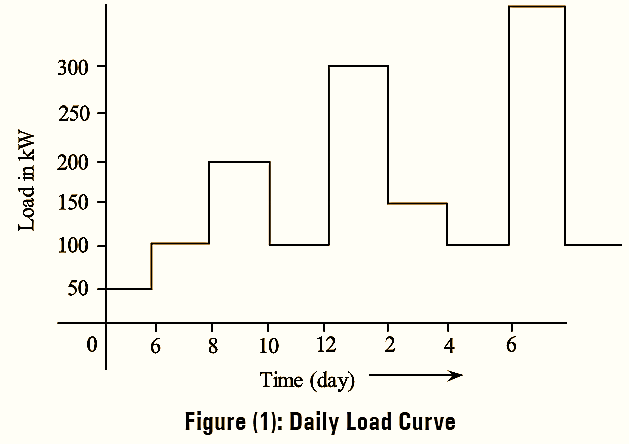
A graph obtained between the load consumption and time is called as load curve. Load curve is the graph between varying load on power station and time by taking load on y-axis and time on x-axis. It is also defined as the curve representing the load demand with respect to time.

The curve is referred as daily, monthly and annually load curve, when the time is represented in hours, days and months represented. However, a general daily load curve is shown in figure 1.
Load on power station is not constant, it varies from time to time. If the variations in load considered hourly then it is called daily load curve. Monthly load curve can be drawn from daily load curves of specified month by calculating average value of power at a particular time of the day. In similar manner we can draw annual load curves from monthly load curves of particular year.
Significance of Load Curve
Load curves provides following information.
- Load variations during different hours and a day.
- Maximum and minimum load on the station.
- Area under load curves represents total number of units generated for considered period.
- Average load on the station obtained by dividing the area under the curve by number of hours.
- Station load factor can be determined.
Q1. How load curves help in the selection of size and number of generating units.
Ans: In power systems, the load is a function of time (varies from time to time). Hence, it is not worth while to consider a single unit as economical proposition to meet the load changes. However, the above problems can be eliminated by selecting the number and size of generating units, which can be done by using load curves.
Apart from the above: the following points should be kept in view while choosing size and number of generating units.
- The installation of units should be of different capacities rather than that of identical one’s which reduces the capital cost of the unit
- The selection of size and number of unit should be such that it should closely fit the load curve in order to obtain continuous and reliable service.
- To meet future requirements the capacity of unit should be considered 20-25% more than the maximum demand.
- A spare generating unit should be considered in order to avoid breakdowns during repairs and over hauling’s.